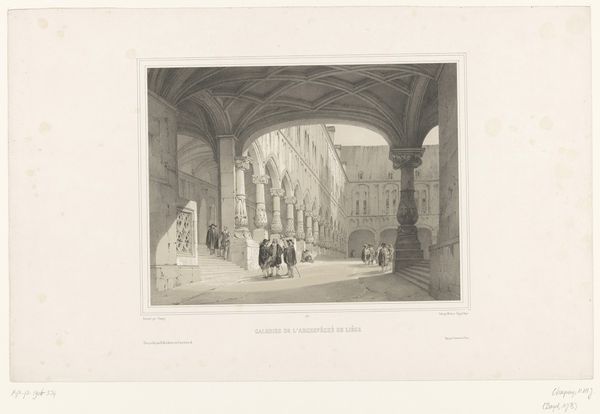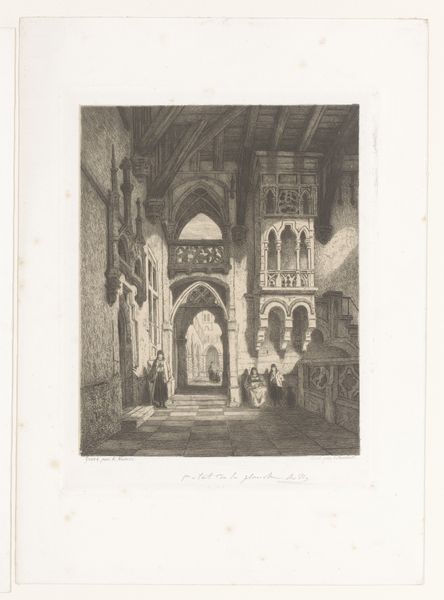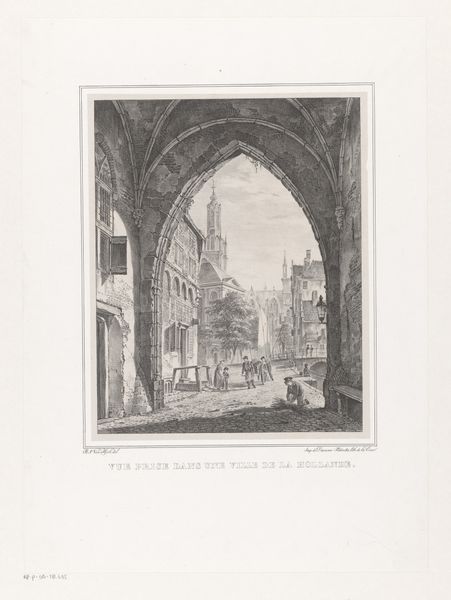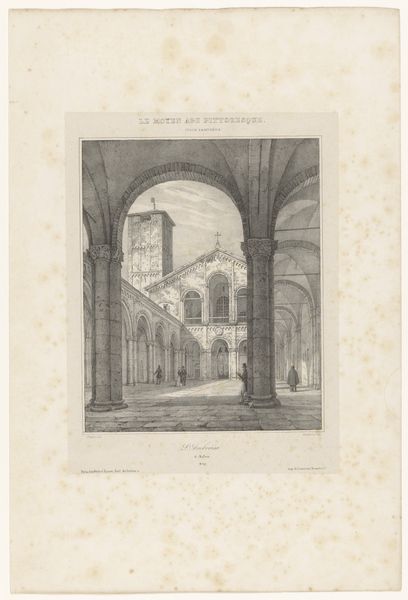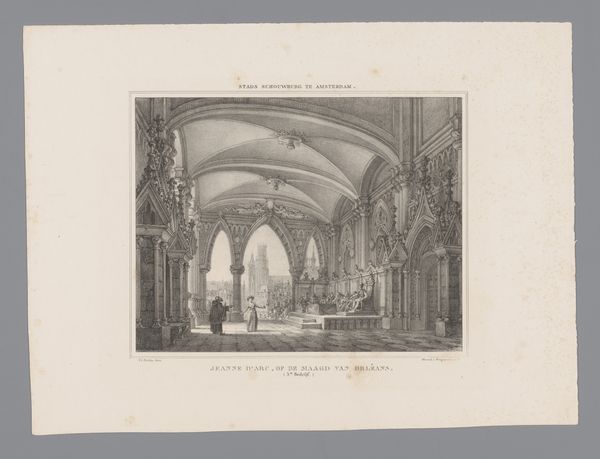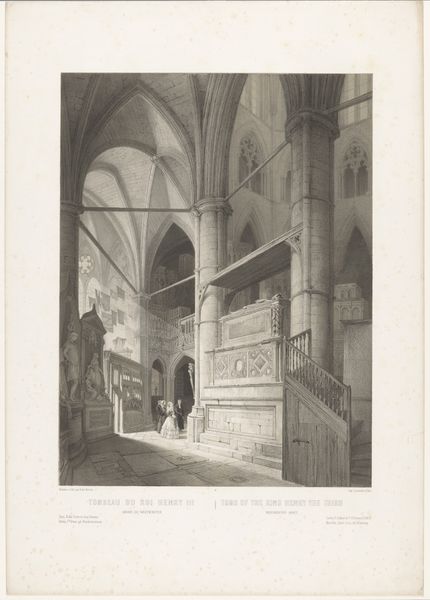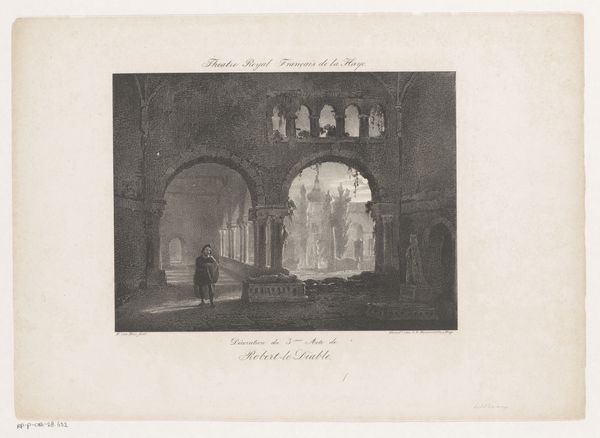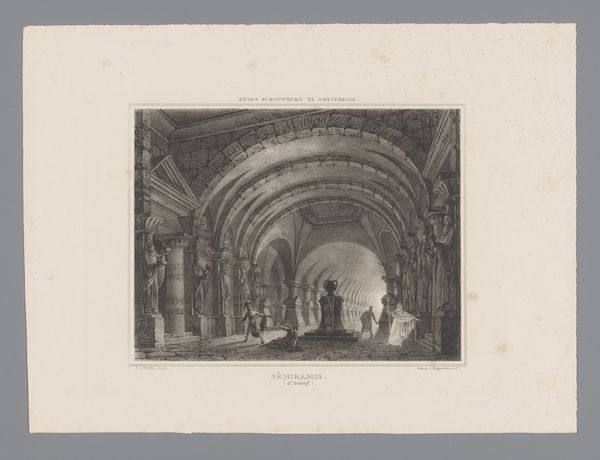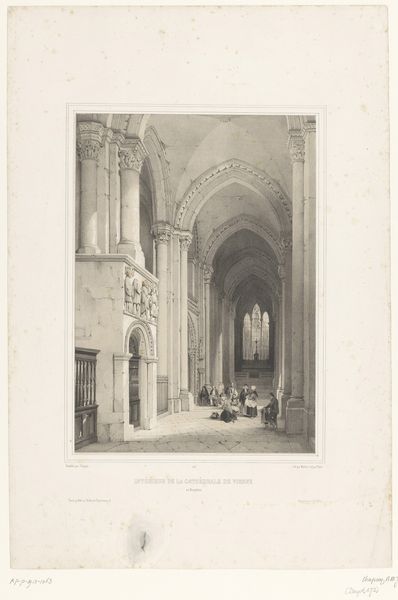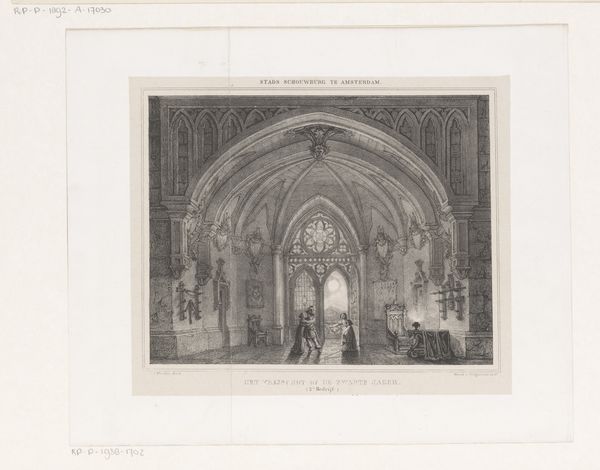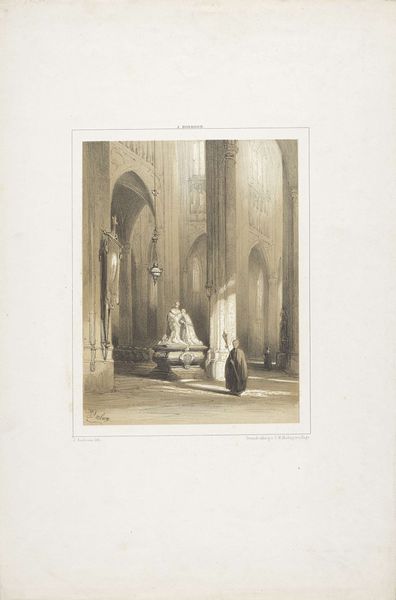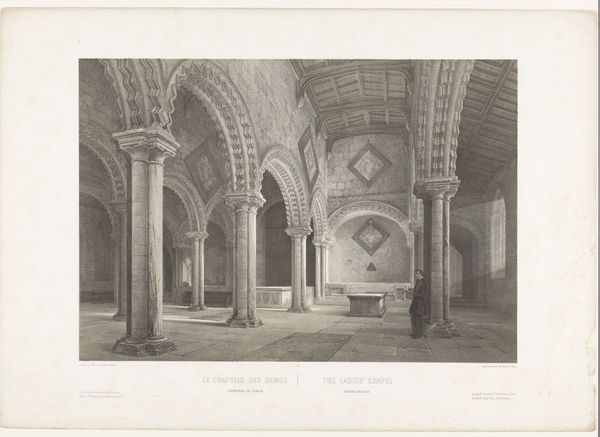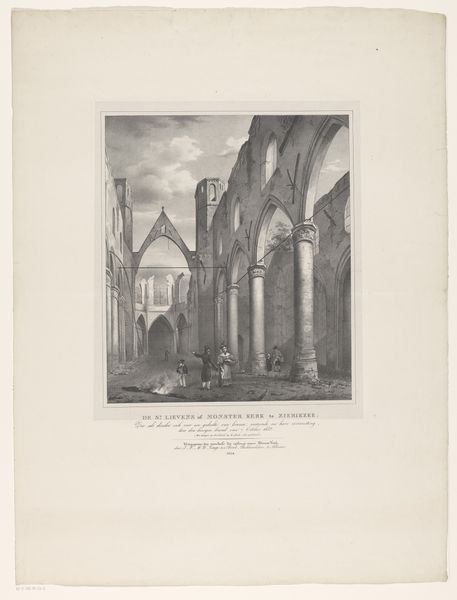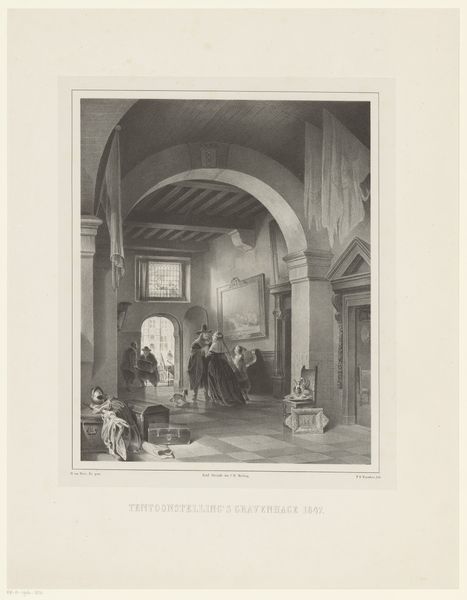
print, engraving
# print
#
perspective
#
romanticism
#
line
#
cityscape
#
engraving
Dimensions: height 422 mm, width 287 mm
Copyright: Rijks Museum: Open Domain
Editor: This is Jean-Baptiste Isabey's "View of the courtyard of the prison in Florence," made in 1822. It’s a print – an engraving – and there's something about the somber perspective that's incredibly captivating. What strikes you most about this work? Curator: The emotional weight of the symbols jumps out. Notice how the rigid architectural lines converge, drawing our eyes toward the prison's depths. Even the figures seem almost staged, part of a tableau vivant reminding us that spaces, especially those of incarceration, are laden with pre-existing narratives. The stone sculptures mounted on the walls -- are they masks or commemorative plaques? Editor: I hadn't thought about those. Masks, perhaps? Curator: Maybe, or family crests perhaps, meant to show the stature of prisoners, thus reminding everyone of the cost of incarceration for a privileged person. Think about how these images would communicate specific meanings to an 1822 audience familiar with Florentine society. Can we really see this work divorced from the historical moment? Editor: So, even in what seems like a simple cityscape, there's a complex web of symbols related to social class and justice. Curator: Precisely. Isabey's composition seems designed to elicit an emotional and moral response. It isn’t simply a picturesque view, but a meditation on the prison's symbolic resonance and its impact on Florence's collective consciousness. The etching creates more distance from the site and suggests something removed and untouchable about punishment. Editor: I guess it made me think more deeply about how an image can carry a powerful narrative just by depicting a place, even without showing explicit violence. Thanks! Curator: A very good observation. I find myself now contemplating not just the physical prison, but the imprisoning structures of societal judgment.
Comments
No comments
Be the first to comment and join the conversation on the ultimate creative platform.
